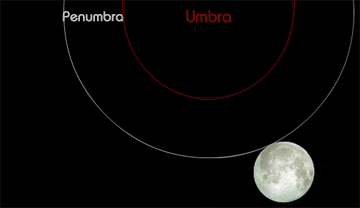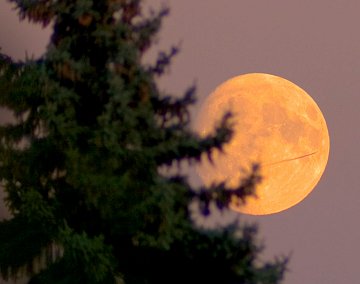 Did you miss the aurora surprise of August? Next time get a wake-up call: Spaceweather PHONE.
Did you miss the aurora surprise of August? Next time get a wake-up call: Spaceweather PHONE.
MUCH ADO ABOUT PLUTO: When the IAU demoted Pluto on August 24th--"it's not a planet"--the decision was supposed to end years of debate about Pluto's status. It hasn't worked out that way. Do you have an opinion? Sign the Pluto Petition.
LUNAR ECLIPSE: On Thursday night, Sept. 7th, the full Moon will glide through Earth's shadow, producing a partial lunar eclipse visible from Europe, Asia, Africa and Australia: map.

Animation credit: Larry Koehn of Nashville, Tennessee.
Only 19% of the Moon will actually fall into deep shadow, but that's enough for a pretty display. Maximum eclipse takes place at 1851 UT, with at least some shadow visible 45 minutes before and after. [more]
DISTANCES: Last night in Potsdam, Germany, Christoph Rollwagen photographed the Moon--and a few things in between. Their distances were related by an unplanned mathematical harmony. (continued below)

"At the moment of exposure," says Rollwagen, "the camera was 30 centimeters from the photographer, and the tree was 300 meters from the camera. The airplane crossing the face of the Moon was 300 kilometers away, while the distance to the Moon is more than 300,000 kilometers. These steps differ from each other by multiplications of 1000."
1000-part harmony? No wonder it's such a pretty picture.

